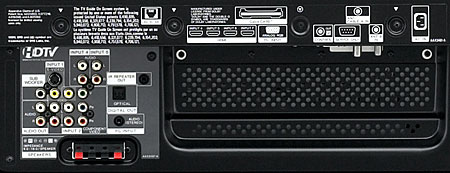Pioneer Elite PRO-110FD Plasma TV Setup & Tests
To set up and calibrate the PRO-110FD, I had the help of Pioneer's plasma maven, Josh Kairoff, and his laptop, which included a beta version of some new software from Sencore that adjusts all user controls without having to go into the TV's menu system. This was a blessing, since calibrating the set from the menu is an exercise in frustration—you must dig down deep into the menu, adjust a control, back out to see what that adjustment did, then dig back down to make another tweak. This is a very time-consuming process without the Sencore software, which should soon be available for free download from Sencore's website.

Another advantage of the Sencore software is its ability to access the set's ISF Day and Night modes, which are available only in the Elite models and cannot be calibrated from the user menu directly. These modes allow a technician to calibrate the picture and lock those settings so no one can mess with them. The ISF modes also provide access to two functions that are otherwise unavailable—Y/C delay, which brings luminance and chrominance into sync, and independent red, green, and blue controls for 10 different brightness levels, from 10 to 90 IRE. Talk about serious tweakage!
Looking at the HQV Benchmark DVD at 480i, detail was excellent, though there was just a bit of shimmering in the vertical high-frequency burst. The set's processor virtually eliminated jaggies in all three tests. It took longer than usual to try all the noise-reduction controls, of which there are four in the PRO-110FD. 3DNR was very effective, softening the picture only slightly. Field NR, which is said to "reduce 'smoky' noise in DVD images" (whatever that means), was also effective at reducing the appearance of noise in the test images. Block NR didn't seem to do much, but Mosquito NR was fairly effective at reducing mosquito noise.
All three film modes locked onto 3:2 pulldown very slowly (taking more than a second), then they lost the lock at the very end of the race-car loop. In the assorted-cadences test, 2:2 video had lots of jaggies, but 3:2 looked very good. With Text Optimization off, the horizontal video-text crawl superimposed over 3:2 film looked terrible, but turning TO on made it look much better. Apparently, Text Optimization simply doesn't process 3:2 in the lower portion of the screen.
Switching to the HD DVD version of HQV Benchmark at 1080i, the video resolution-loss test had slight banding in the vertical high-frequency bursts. The film resolution-loss test exhibited the same slight banding, and it also showed a momentary flickering as the test began, though it was solid after that. There seemed to be little difference between the three film modes; sometimes, the Advance mode seemed a bit smoother in the pan across the bleachers, but at other times, it was no different than the other modes. Jaggies were completely invisible.
The Spears & Munsil test HD DVD clearly demonstrated that the TV's processor immediately locked onto 3:2 pulldown at 1080i in all three film modes. However, it never picked up a 2:2 cadence in any mode.
One of the few currently available Blu-ray test discs is called FPD For Professionals, which includes lots of revealing tests, such as shots with fine detail in motion. The scrolling monoscope pattern looked great with no appreciable loss of detail. Scrolling letters and Japanese characters were also very clear, as was the swinging hammock, metronome, and cars driving past the camera. In the Gradation portion of the test suite, the 0-100% ramp had a bit of banding, while the 0-25% ramp had a bit more, but I've never seen a flat panel that had none, and this was better than most.
As you might expect, Pioneer's own Blu-ray demo disc looked fantastic. This disc features lots of black-performance tests, such as a photography studio with different shades of black, all of which were clearly discernable. Scenes with red flowers and fruit on a black background were equally gorgeous, taking on a distinct three-dimensional quality.
- Log in or register to post comments














































